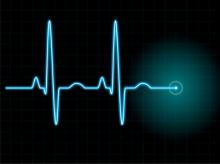
Who should conduct the PPE?
A child's primary care physician is usually well-qualified to conduct a PPE, given his or her broad training and because he or she knows when to consult with specialists if problems requiring further clinical expertise are detected.
Since a recent study found that almost 4 out of 10 physicians in Washington State were not aware of the PPE Monograph, parents should not assume that their child's doctor knows how to conduct a complete PPE and should make sure their child's doctor is knowledgeable about the required elements in today's PPE, which is much more sophisticated than the general health exam previously used.
Parents should therefore ask their child's doctor to use the PPE Monograph, which includes specific questions to ask in taking a medical history and instructions on how to conduct a sports-related musculoskeletal examination (see below).
Where should a PPE be performed?
There are three basic types of settings for the PPE: office-based, assembly line, and station, each with its own advantages and disadvantages:
1. Office-Based (primary care physicians in the office)(considered the ideal location for the PPE).
- Advantages:
- Familiarity with patient: The doctor's familiarity with the athlete makes it easier to complete the PPE form more thoroughly because a complete medical history from prior exams should be available.
- Privacy which facilitates open communication: The doctor may have more time and privacy to educate and counsel the athlete on sensitive health issues (drugs, alcohol, use of performance enhancing drugs, female athlete triad etc.)
- Continuity of care: If athlete has seen the same doctor year after year, the continuity of care offers a critical advantage in detecting, evaluating and treating conditions discovered during the PPE.
- Disadvantages
- Time constraints: The doctor's busy office schedule may allow for only a short general health screen, which may not be adequate to detect conditions predisposing an athlete to injury.
- Lack of expertise: A primary care physician may lack interest in or knowledge of sports-related medical problems, and may feel uncomfortable or unqualified to determine whether an athlete should receive medical clearance to play sports.
- No continuity of care: An athlete may not have an ongoing relationship with a particular physician or practice.
- Cost. Not all athletes can afford private, office-based PPE (high co-pay or deductible or no health insurance coverage at all)
2. Assembly-line (single physician examines one athlete after the other)
- Advantages:
- Cost
- Time
- Disadvantages
- Possible communication problems
- Lack of individual attention
- Increased risk that insufficient medical history will be takenl
- Lack of continuity from year to year (assuming different physicians conduct exams)
3. Station (multiple examiners conduct discrete portions of PPE in sequence)
- Advantages:
- Time- and cost-efficient: Hundreds of PPEs can be performed in single day with well-trained staff.
- Better communication: An athlete may talk more openly with medical personnel in a "team" setting. A station-exam is likely to impart greater knowledge to all members of medical team and coaches of individual athlete's medical condition)
- Specialized expertise: The station approach allows the use of physicians with specialized expertise (cardiologist, orthopedist etc.).
- Disadvantages:
- Noise and confusion. The setting itself can become confusing and noisy.
- Lack of privacy: An athlete may be reluctant to discuss intimate personal health concerns in such an open setting
- Time constraints: An athlete may feel rushed. Time constraints may restrict the opportunity to educate and counsel athlete.
- Care may be compromised: The lack of time and privacy may make it difficult for the athlete and his parents to fully understand the need for additional testing or basis for disqualification. Coordination of care may be compromised because medical personnel may not know athlete previously.
Exam timing
Experts differ on how often an athlete should have a PPE:
- Six weeks before pre-season: The five-society monograph recommends that the PPE be performed six weeks before pre-season begins to allow adequate to correct problems identified through rehabilitation or conditioning program.
- Annually or less? Some experts believe a full PPE should be performed annually, while the AHA recommends obtaining a comprehensive personal and family history from an athlete entering high school or college, with an interim history and blood pressure check each year for the next 3 to 4 years, significant changes or abnormalities triggering another physical exam and further testing. For the high school athlete, the AHA recommends a complete physical every 2 years.
PPE: Components of Exam
- Medical history. Providing a complete medical history is the most critical component of the PPE. Because athletes tend to forget important information and because parents have great knowledge of family medical history, the form should be completed by both athlete and parent. Especially important is the taking of a detailed and structured concussion history, any history of heat illness, and determining if the athlete has sickle cell trait, which exposes him or her to the risk of a life-threatening condition callled exertional sickling.
- Physical Exam (key components)
- Height and weight. A sudden weight change may indicate the presence of disordered eating/female athlete triad or use of performance enhancing drugs (large gain in muscle mass that cannot be explained by weight training alone)
- Eyes, ears, nose, throat: Visual acuity, pupil size, visual correction. Bloodshot eyes or discolored teeth may be signs of an eating disorder
- Cardiovascular (blood pressure, pulse, listening to the heart to check for murmur, hypertrophic cardiomyopathy). In contrast to some other countries (such as Italy), the standard of care in the United States, according to American Heart Association, is not to include an electrocardiogram (EKG) or echocardiogram (ultrasound of heart) as a routine part of the PPE in the belief that a complete and careful personal and family history and physical exam designed to identify or raise suspicion of heart problems are most cost-effective, particularly in light of the fact that the ability to detect life-threatening cardiac abnormalities is only marginally improved by additional non-invasive testing, which often leads to false positive results in athletes because of their intense training. Only athletes who have symptoms or significant family medical history should be further evaluated with specific diagnostic tests (i.e. echocardiogram etc.). Remember also that sudden cardiac death in youth athletes is extremely rare (about 300 deaths per year). [For more on the debate over whether an EKG should be a routine part of the pre-participation physical examination, click here].
- Lungs
- Abdomen (infectious mononucleosis should rule out contact or strenuous sports participation for at least 3 weeks after onset due to risk of spleen rupture)
- Skin (Impetigo, herpes simplex, scabies, rashes, infections, and infestations; increased acne, especially on back, face and chest, abnormally large breasts in males (gynecomastia), stretch marks (cutaneous striae)) may indicate steroid use)
- Musculoskeletal. There are three different types of screening exams:
- General (quick assessment of range of motion, gross muscle strength, and muscle asymmetry, identification of significant injuries; appropriate for athletes with no injury symptoms)
- Joint-specific testing (much more thorough than general screen but significantly more time consuming; perform only if athlete has symptoms of current injury or history of previous injury, weakness or instability)
- Sport-specific testing (focus on areas of greatest stress for particular sport; for example, runners would be assessed for knee and ankle instability, strength and flexibility; recommended only for highly competitive athletes)
- Neurologic: Only performed if musculoskeletal exam is abnormal or on athletes with a history of concussions.



